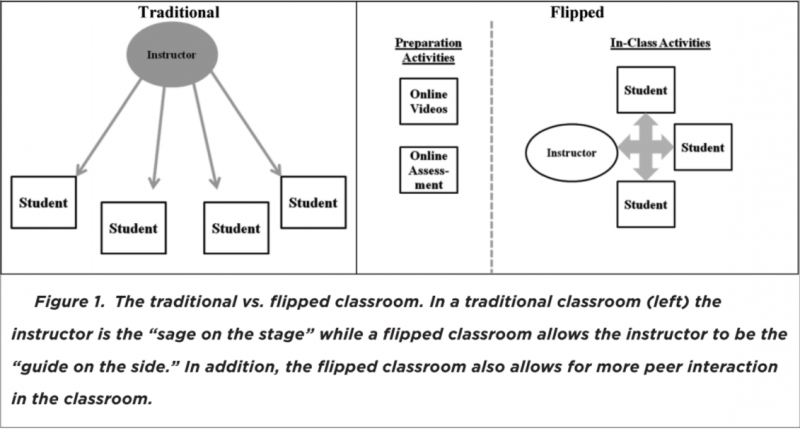Flipped Classroom
| Type | Team Size | ||||||
|---|---|---|---|---|---|---|---|
| Collaborative Tools | Software | Personal Skills | Productivity Tools | 1 | 2-10 | 11-30 | 30+ |
What, Why & When
A Flipped Classroom is a teaching concept that flips the classical structure of in-class vs out-of-class. Teaching material is provided for the students (e.g. digitally) to engage with at home, while the in-class sessions presuppose knowledge of the material and are then used for interactive discussions and exercises.
Goals
- Change the structure of your class to support different learning types and schedules
- Make classes more fun, engaging and effective
Getting started
There is no unified conceptual approach to the *Flipped Classroom* as the concept is rather new. However, there are general elements that all approaches share.
Based on these, the flipped classroom elements can be categorized two-fold: structurally and didactically.
On a structural level, the flipped classroom can be split into in-class and out-of-class activities. The out-of-class activities provide the students with a range of learning material, such as pre-recorded lectures, online tests, reading material, homework exercises, additional videos, podcasts etc. The students receive this material, preferably digitally via a learning platform, and can generally engage with the material whenever they like. However, the instructor may expect the students to know the content of the material when the in-class session starts, and may check this knowledge at the beginning of the session. In presence (= in-class), the students are not faced with more frontal learning, but instead, these sessions are structured around active learning exercises. These may include group discussions, group exercises, Q&A sessions or interactive tests (for example via Mentimeter), challenges, panel discussions etc. The students should not receive (much) new content, but rather consolidate their knowledge in these sessions and actively engage with the topics in their peer groups.
On a didactic level, the teacher (professor) assumes a different role in Flipped Classrooms compared to traditional lectures: (s)he is no longer only an information provider, but rather becomes a learning guide to support active learning. To this end, the Flipped Classroom intends to put an emphasis on student-centered learning theories such as active learning, peer-assisted learning and collaborative learning (Akçayır & Akçayır, 2018, p. 335). This changes the atmosphere of the sessions, and allows for the students to engage with the content of the lecture from more diverse perspectives, which may support different learning types.
Advantages and Challenges of Flipped Classroom approaches
Akçayır & Akçayır (2018) provide a range of hypothesized advantages and disadvantages which they base on a systematic literature review. These include improved learning outcomes, higher student satisfaction, enjoyment and engagement, better student-student and student-instructor interaction and more efficient use of class time. On the other hand, challenges include higher workloads for both students and instructors, a subsequent lack of preparedness for the in-class sessions and technical issues. Since Flipped Classrooms are a rather young concept, there is not much evidence on its effectiveness. Still, the existing literature indicates positive outcomes compared to traditional lecturing styles. It may be noted that the benefits of the concept may vary depending on the topic of the class, as well as other factors such as class size.
Links & Further reading
- Bishop, J. L., & Verleger, M. A. (Eds.) 2013. The flipped classroom: A survey of the research. Vol. 9.
- Akcayir, G. Akcayir, M. 2018. The flipped classroom: A review of its advantages and challenges. Computers & Education 126. 334-345.
- Findlay-Thompson; S. Mombourquette, P. 2014. Evaluation of a flipped classroom in an undergraduate business course. Business education & accreditation 6(1). 63-71.
- Velegol, S.B. Zappe, S. E. Mahoney, E. 2015. The Evolution of a Flipped Classroom: Evidence-Based Recommendations. Advances in Engineering Education.
- Tucker, B. 2012. The Flipped Classroom. Online instruction at home frees class time for learning. Education Next.
The authors of this entry are Matteo Ramin and Christopher Franz.
